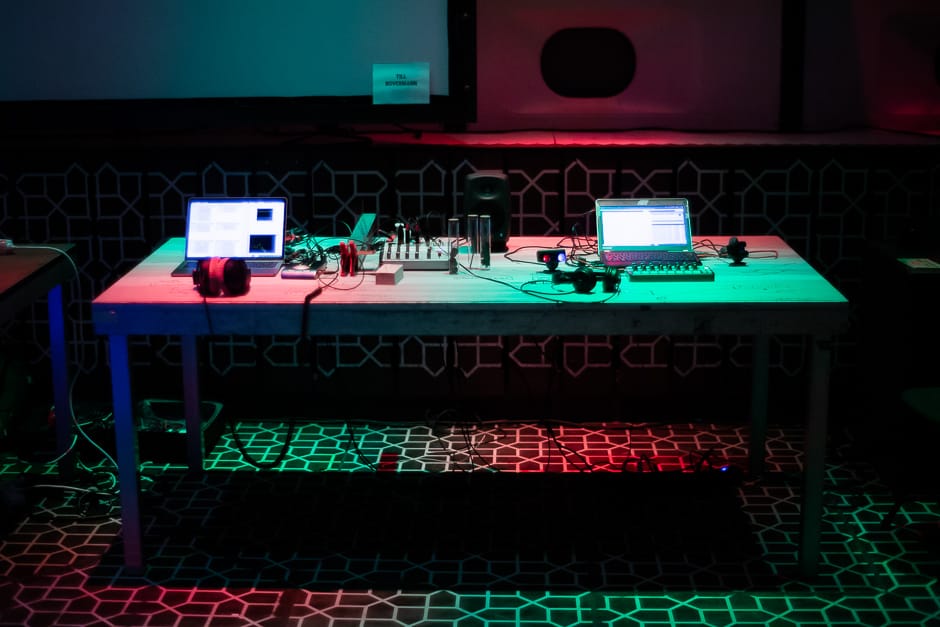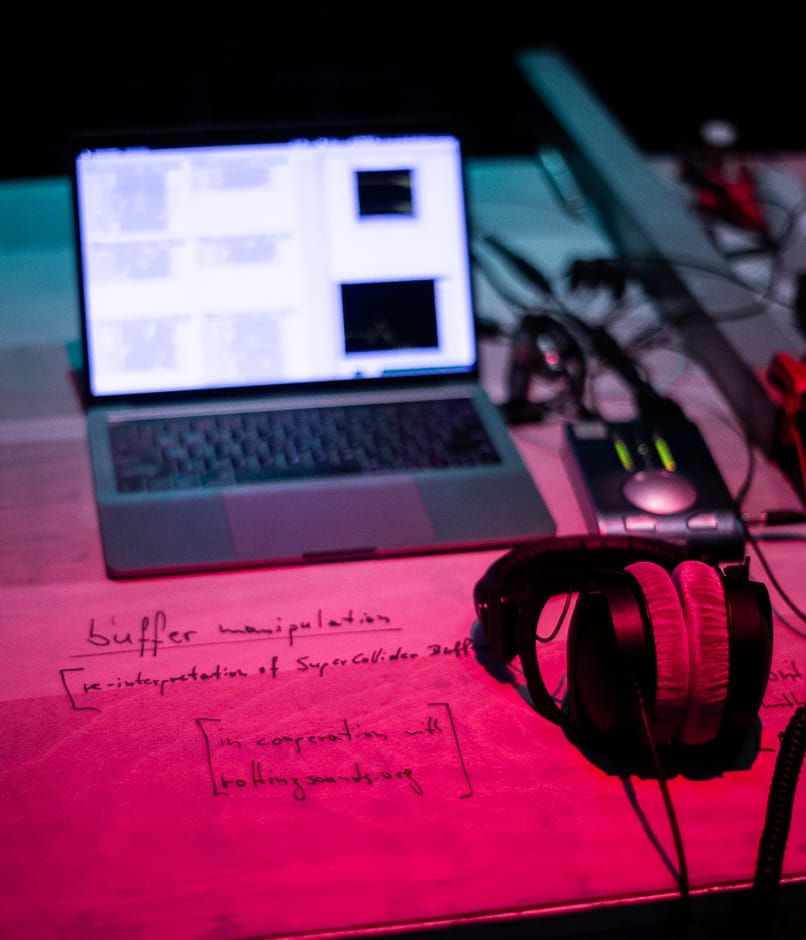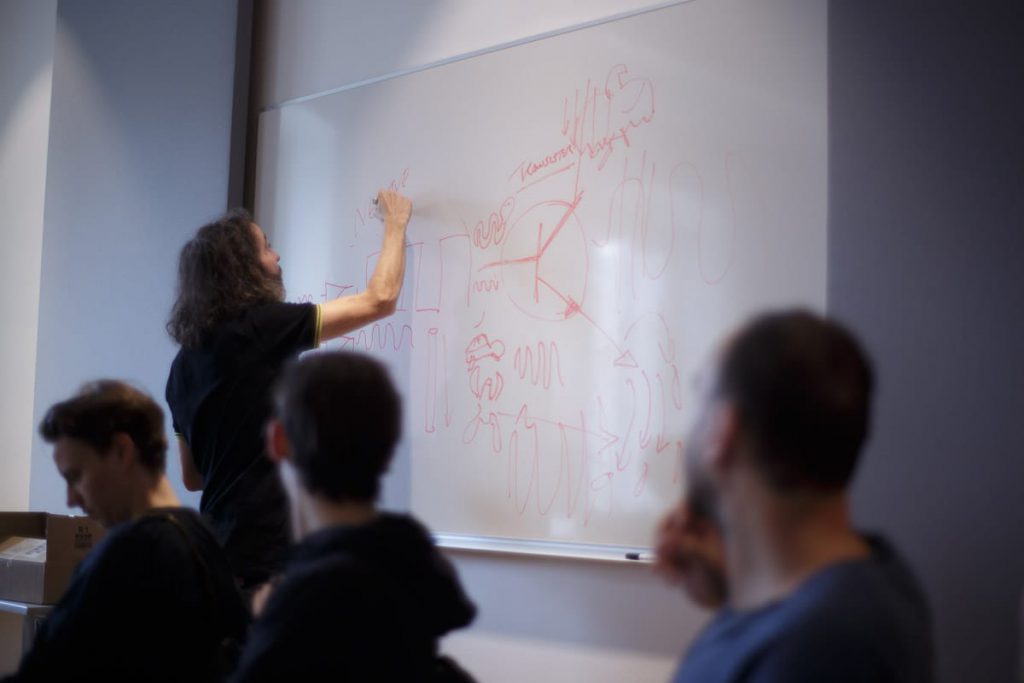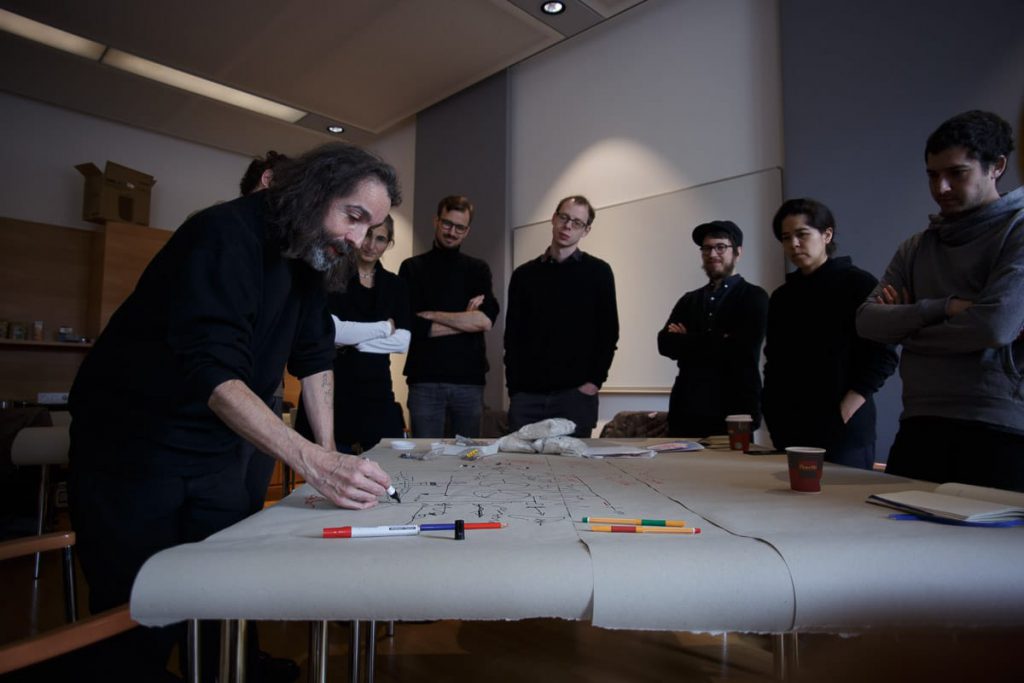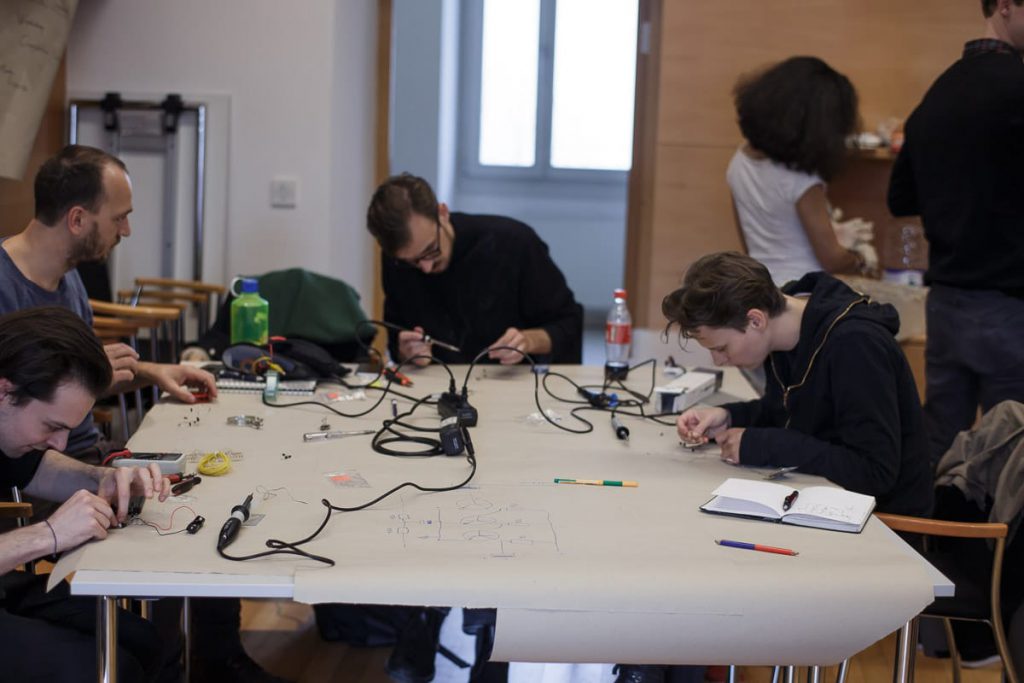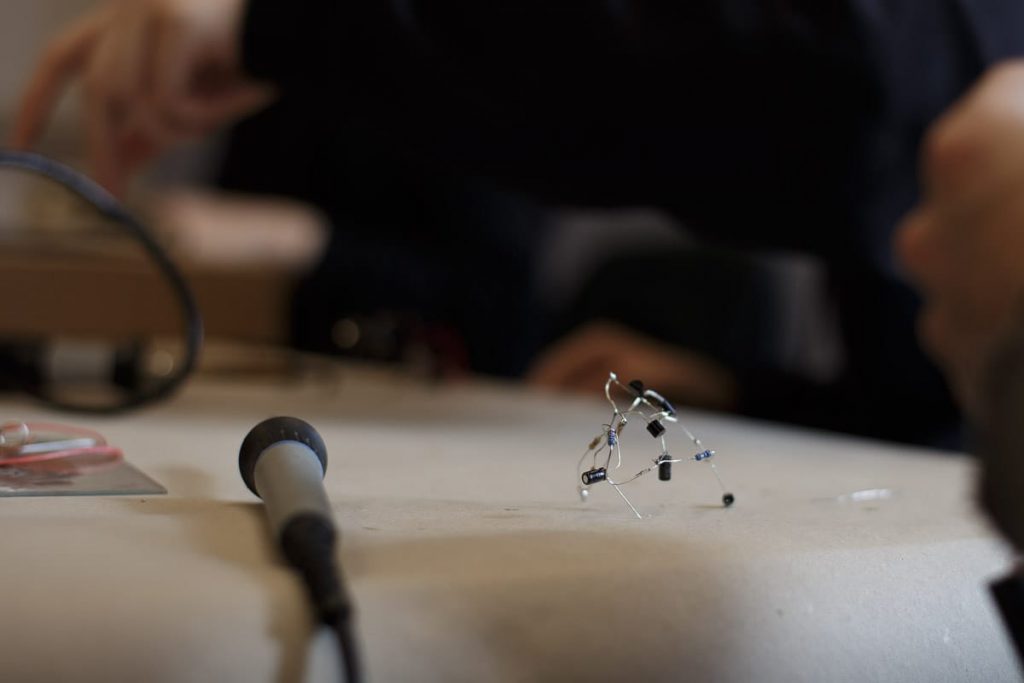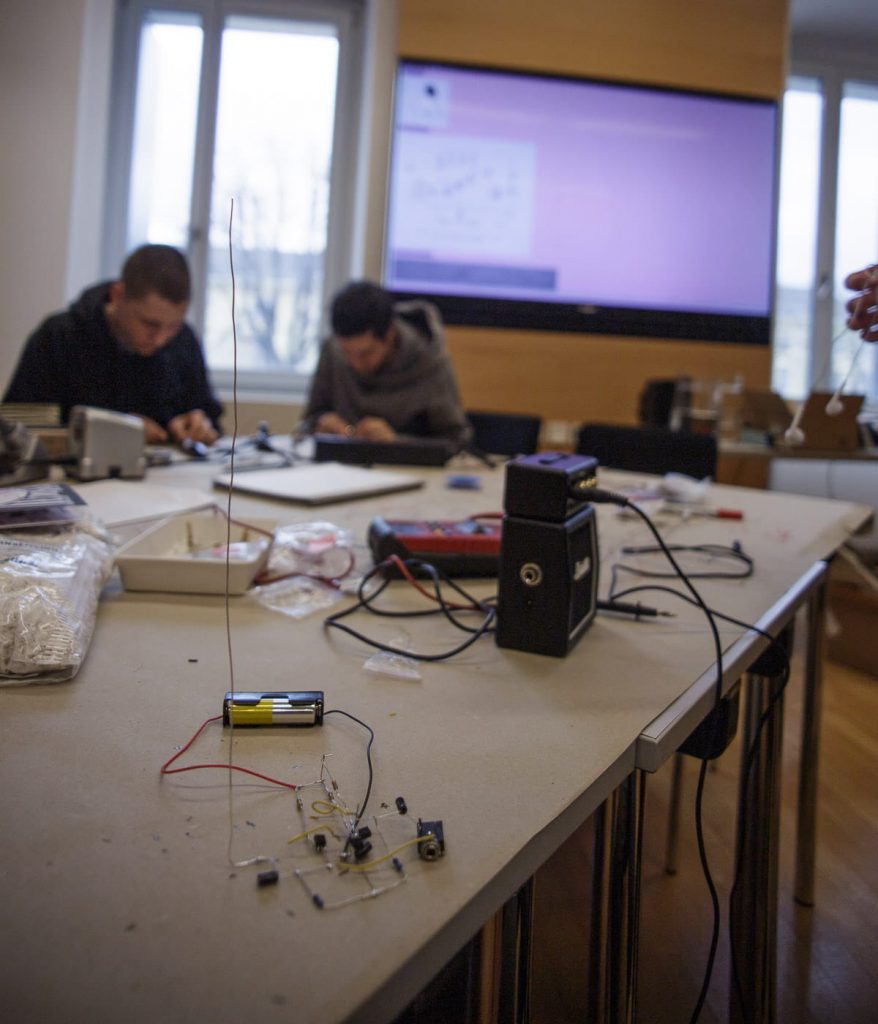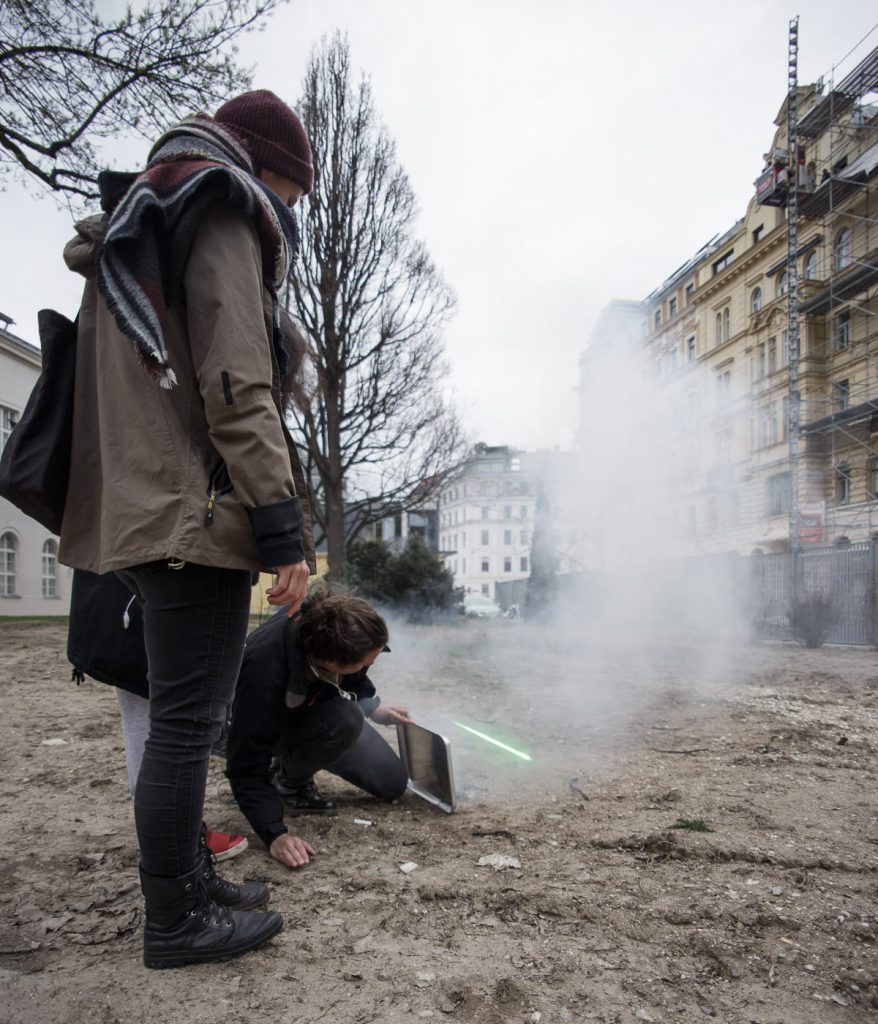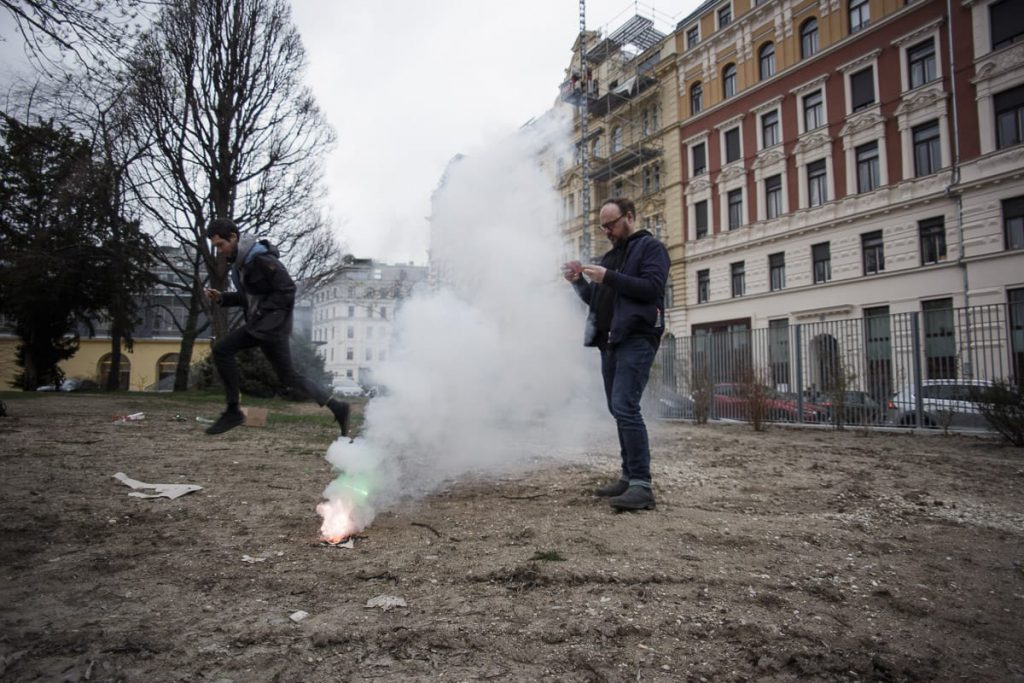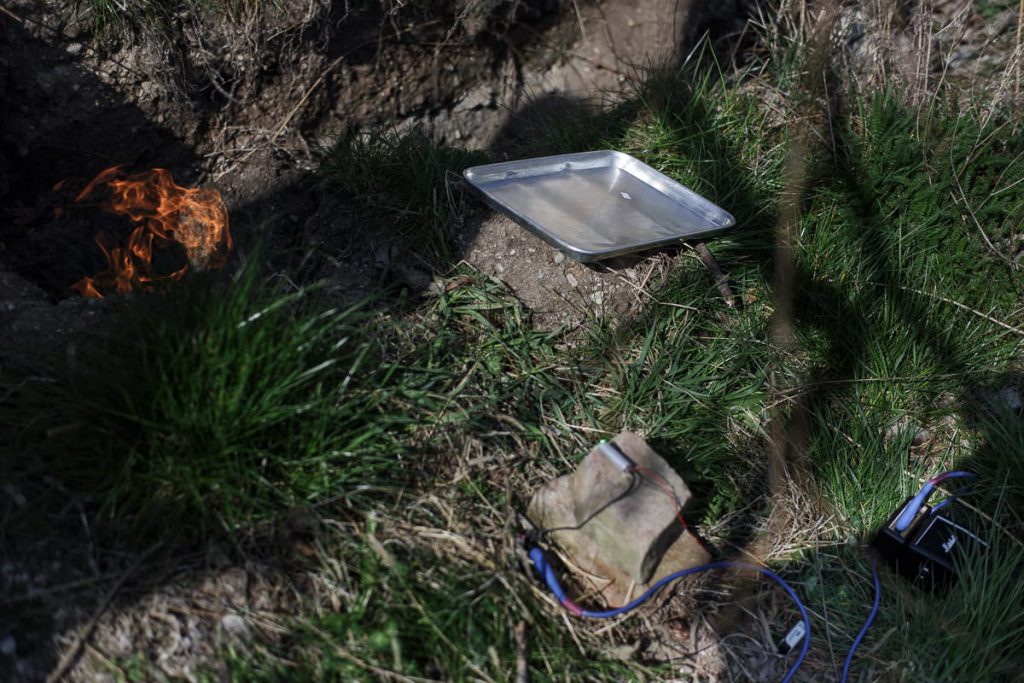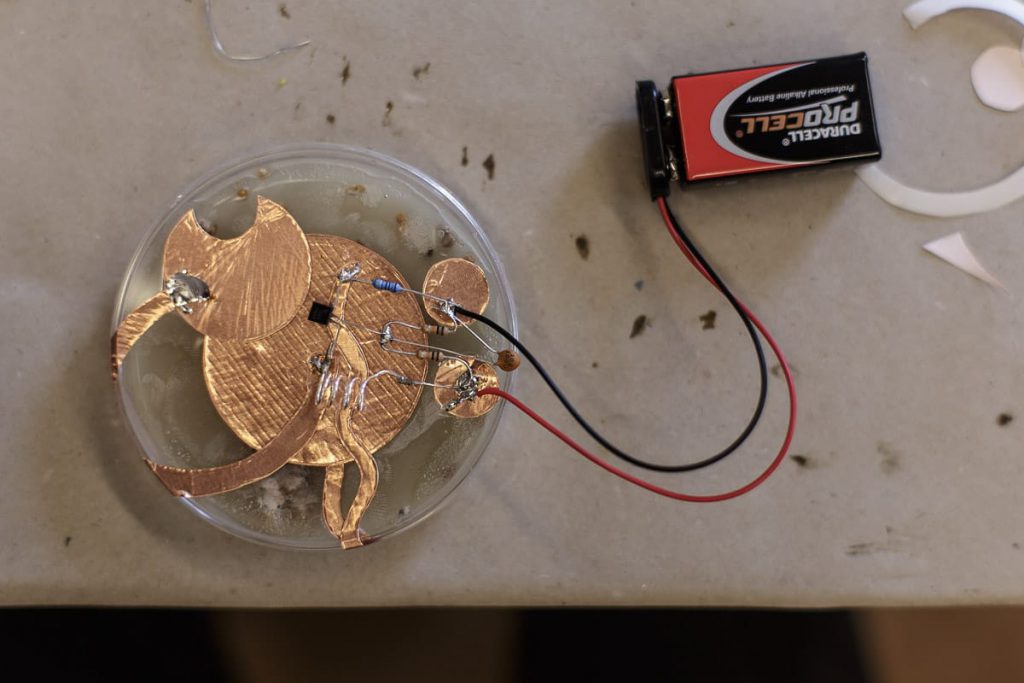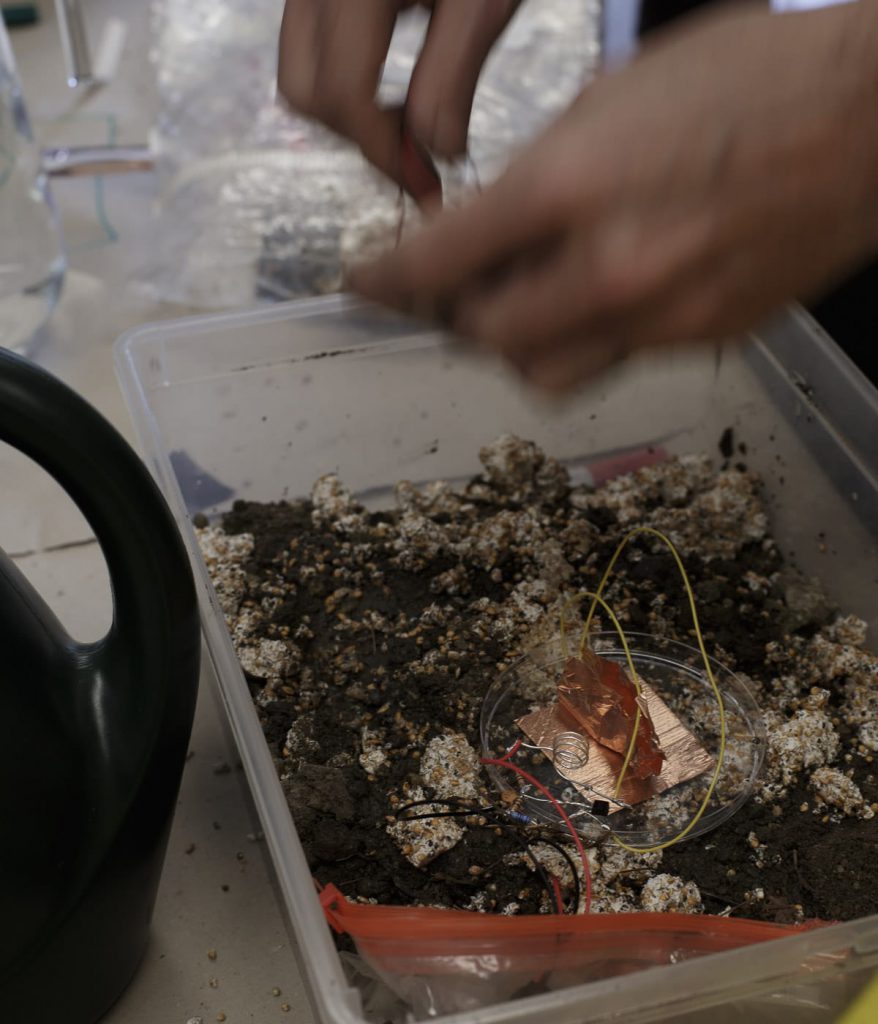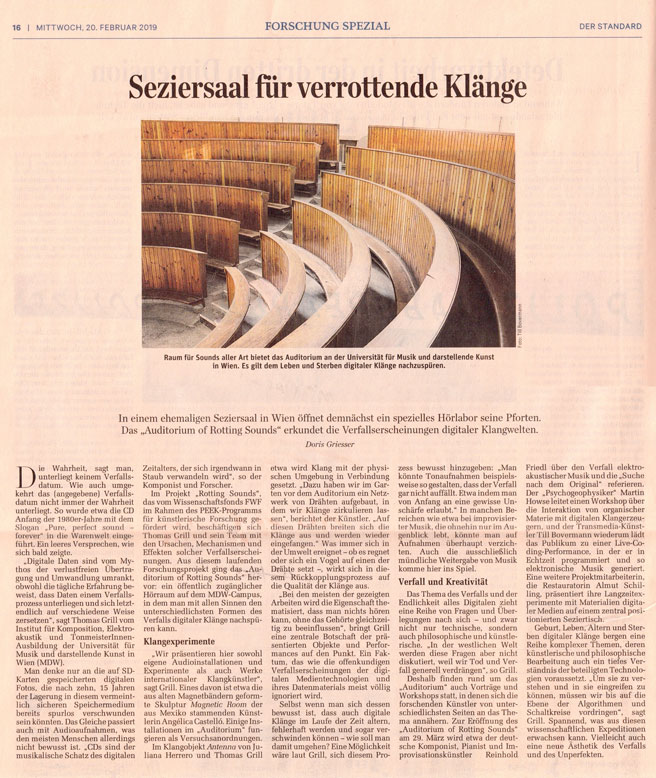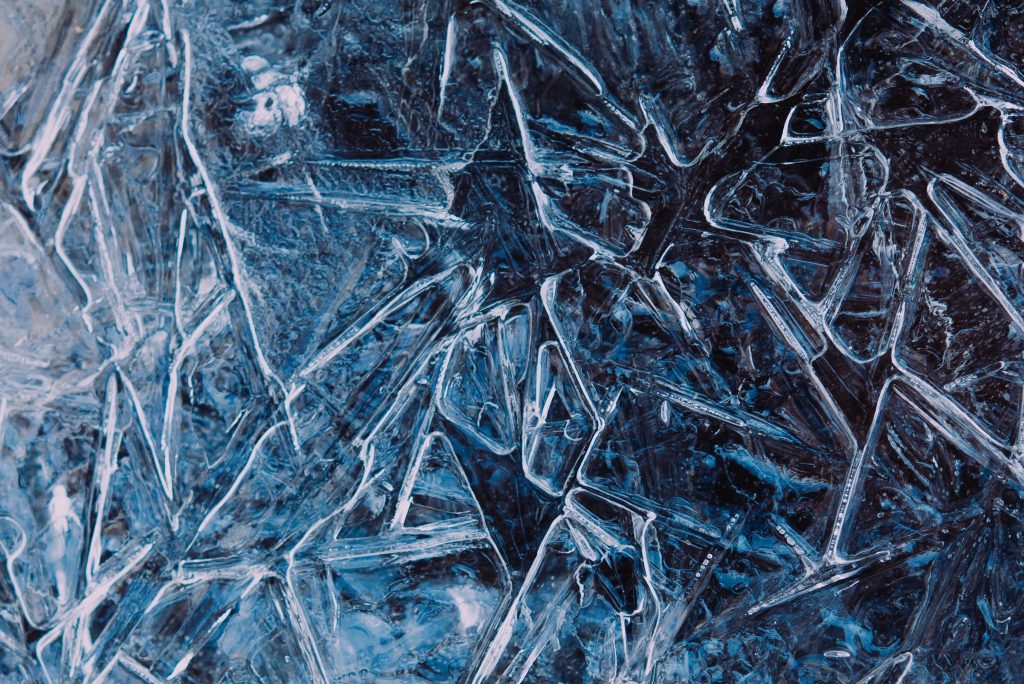Re-interpretation
Buffer Manipulations in Supercollider.
Recording of the live performance “Buffer Manipulation” by LFSaw (Till Bovermann) at the opening of the Auditorium of Rotting Sounds. Includes bonus track.
Circulation / Corruption
Impressions of the workshop at University of Music and Performing Arts Vienna conducted by Martin Howse
Librarian’s Choice, MDW, March 13
Thomas Grill represents the rotting sounds project at the panel discussion “Ungehörtes – Unerhörtes” (unheard – unheard of), featuring archival sound documents of the library of the University of Music and Performing Arts Vienna.
March 13, 6pm
University library, reading room
Anton-von-Webern-Platz 1, 1030 Wien
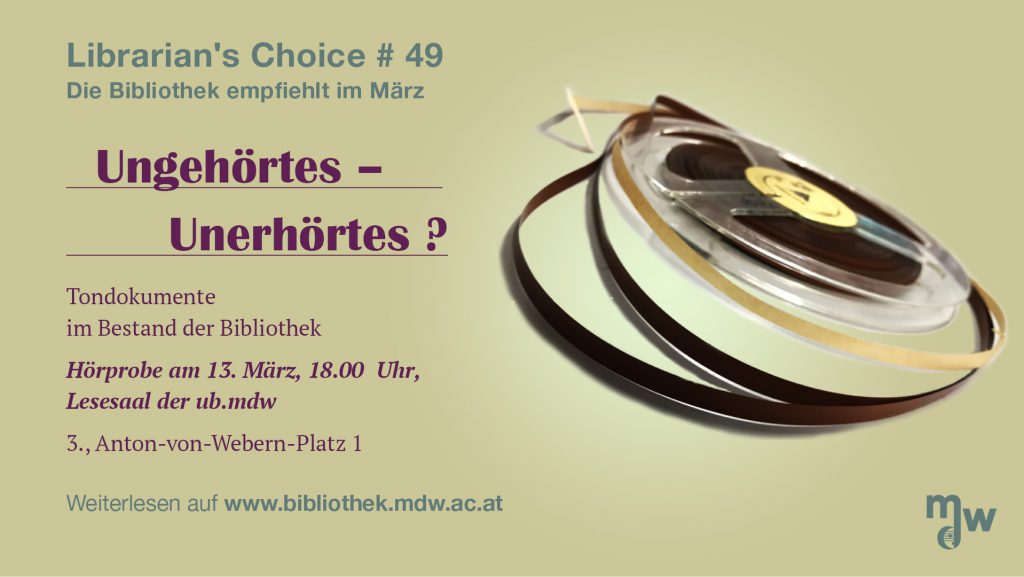
Article in MDW magazine, February 25
The web and print magazine of the University of Music and Performing Arts Vienna (MDW) has published an article on the Rotting sounds project.
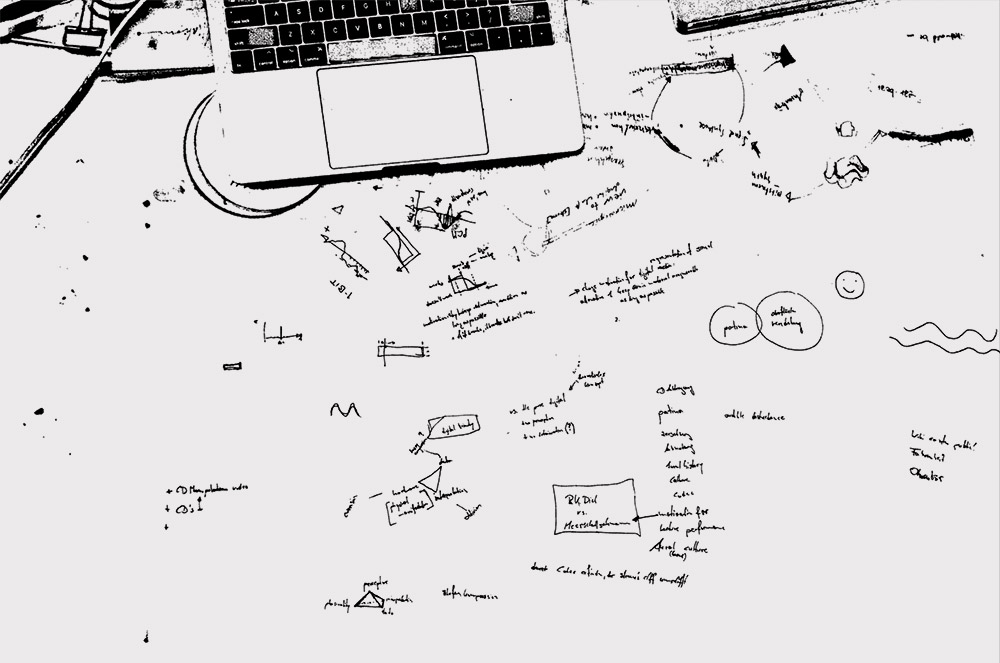
Article in Austrian daily newspaper Der Standard, February 20
Journalist Doris Griesser has authored a nice feature article on the opening of the upcoming “Auditorium of Rotting sounds” for the Austrian daily newspaper Der Standard.
Spannend, was aus diesen wissenschaftlichen Expeditionen erwachsen kann. Vielleicht auch eine neue Ästhetik des Verfalls und des Unperfekten.
Workshop circulation/corruption by Martin Howse, March 28-29
Our team members, psychogeophysicist Martin Howse and media artist Till Bovermann will conduct the workshop Circulation and corruption, examining the various circulations of media through the matters and bodies of the earth and atmosphere, and through a certain corruption or dissolution of (digital) identity, meaning and description.
The workshop is fully booked. Many thanks for your overwhelming interest.
March 28th, 10:00 to 17:30
March 29th, 09:30 to 13:00
Senatssitzungssaal L0123
University of Music and Performing Arts Vienna
Anton-von-Webern-Platz 1, 1030 Wien, Austria
All technology that is derived of earth, must be decomposed and again reduced to earth. [Basil Valentine]
Old earth, no more lies, I’ve seen you, it was me, with my other ravening eyes, too late. [Samuel Beckett]
Within a one and a half day hands-on, speculative workshop we will collectively explore the interfaces and exchanges between living systems (earth, compost, worms, mycelium) and active audio electronics. We will participate primarily with our hands and our ears within circulations amongst earths, composts, mushroom mycelium, moulds, active chemistry, worms, crows, dusts, smokes and fogs and impulses and waves.
During the workshop we will construct a series of open circuits which do not conceal their materiality but participate equally within material and electrochemical exchanges and circulations. These circuits are inspired through a media archaeology of electronic music production, and through the history of alchemical engagement with minerals, with decay and with the earth. These technical and conceptual influences are equally opened to circulation and corruption during the workshop.
We will work with a range of materials (for example, machine cut copper sheets and oyster mushroom mycelium) and approaches (for example, with radio transmission and signal reception) to design and build these open circuits which will enter into processes of appreciable decay, corruption and dissolution. These open circuits will be placed during the workshop in selected interior and exterior locations to participate in various time scales of deterioration and degradation.
No specific technical knowledge is necessary for participation.
Contribution to the SAR Conference 2019, February 21-23
Our submission to the 10th SAR International Conference on Artistic Research at the Zurich University of the Arts has been approved.
We are referring to the conference topic “Inspiring Failures” which is close to the conceptual underpinning of the rotting sounds project
In the artistic research project Rotting sounds – Embracing the temporal deterioration of digital audio, we explore artistic opportunities arising from obsolescence, degradation and information loss in digitally represented sound.
Compared to a gradual and graceful degradation and eventual disintegration of analog sound, common digital representations tend to exhibit an abrupt breach into fail and thus silence. Decay is, however, inevitable to any representation. We therefore propose to tightly integrate it into the artistic practice and embrace its (seemingly negative) effects as aesthetic benefit.
By means of experimental digital audio toolchains designed to fail easily yet graceful, degradation turns from disastrous errors into transformational, generative elements, hence offering a palette of opportunities to the artist.
This disposition to (re)act to circumstances of unanticipated behavior asks for a certain capability to tolerate the unexpected and improvise.Within the project, we are also exploring to integrate said perspective into both our decision processes and our documentation: The fact that concepts require flexibility to adapt to such complex context is a rather trivial insight. However, the dissolution of ideas, strategies or methods seems less easily digestible. We note that, analogous to our case of deteriorating media, there will always be a residuum that sediments and is researched for emerging follow-up concepts. One method to facilitate sedimentation and documentation is to assemble convolutes of media artifacts. Although we lose control about the exact form of such legacy, we leave a composting sculpture, anticipating the future form of our residues, to be rummaged through and re-interpreted by those who follow. The success of the prospection is depending on the coordination and motivation of the seekers.
Notably, our embracement of data loss is in obvious conflict with currently enforced “Research Data Management” policies, demanding sustainably stored research data. In the interest of our research topic and more generally, in the interest of artistic freedom, we must claim the right to let our data degrade, and, eventually, even vanish.
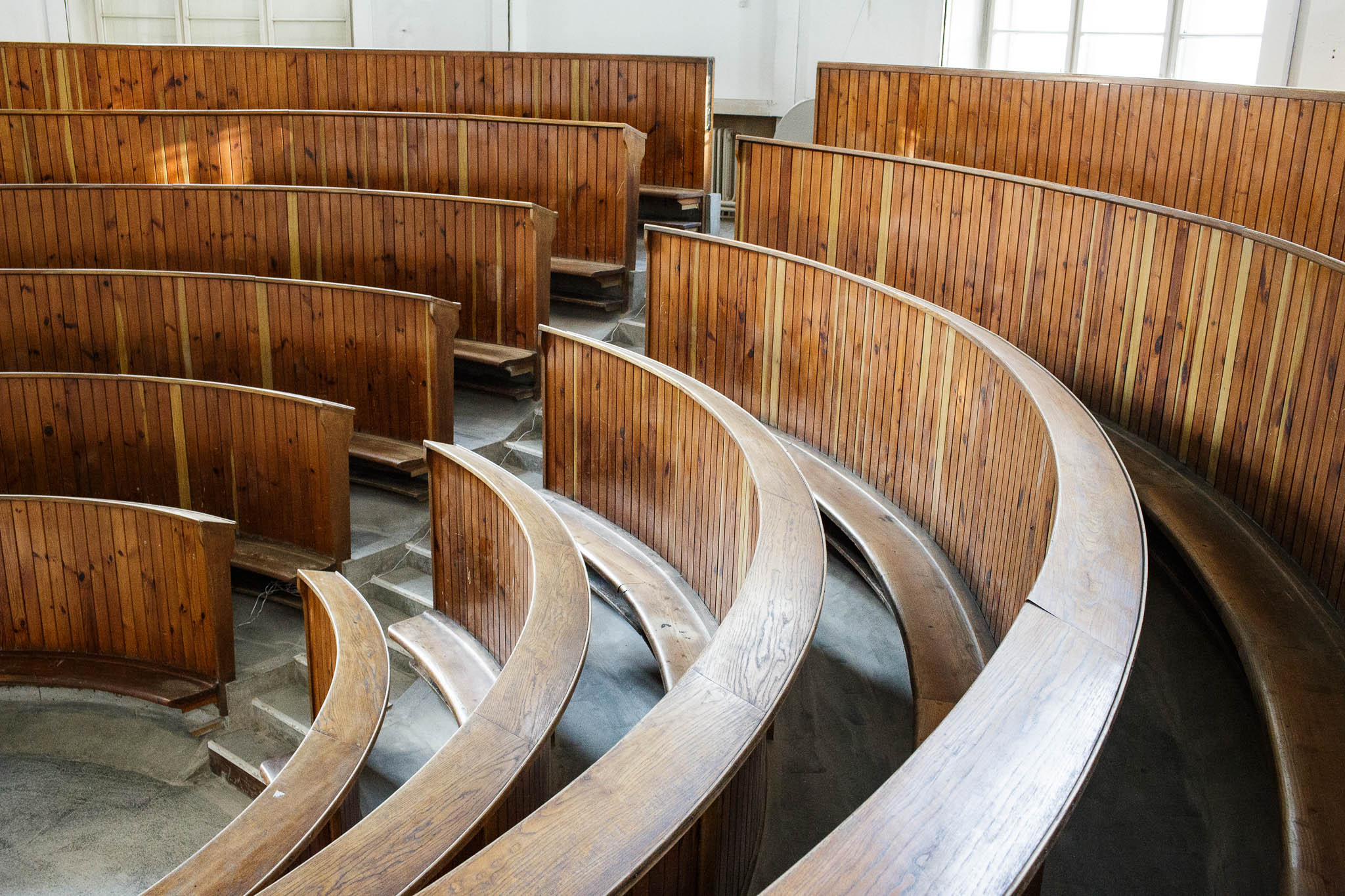
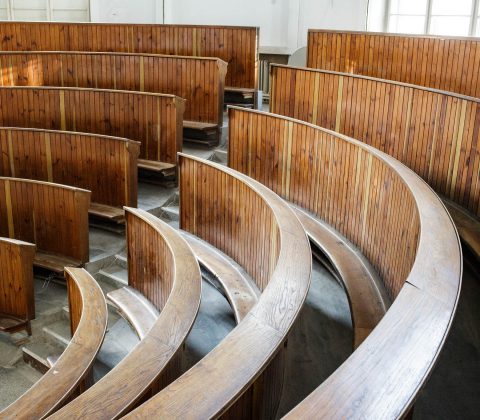
Opening of the Auditorium of rotting sounds, March 29, 6pm
Program:
Reinhold Friedl: Die Suche nach dem Original: vom Verfall elektroakustischer Musik – lecture
Klaus Filip: Sonic Dust – opto-acoustic performance
Till Bovermann: Buffer manipulations – live coding performance
Mario de Vega: Suspension – for quadraphonic system, tape, objects and self-made electronics
at the Bankettsaal of the University of Music and Performing Arts Vienna
Anton-von-Webern-Platz 1, 1030 Wien, Austria
The Auditorium is open after 7pm with the following works on display:
Angélica Castelló: Magnetic Room – objects and sound installation
Klaus Filip: Dust a bit – opto-acoustic installation
Juliana Herrero and Thomas Grill: Antenna – sounding object
Martin Howse: Enrichment and depletion – installation
Nicole Krenn and Thomas Grill: Fields of Haze – audiovisual installation
Tobias Leibetseder: Fragments – installation
Mario de Vega: Intermission – sounding object
Till Bovermann and Almut Schilling: CD-R(ot) – sound installation
… and other works and experimental setups of the project team Thomas Grill, Till Bovermann and Almut Schilling.
Live events in the Auditorium during the opening:
Angélica Castelló: Magnetic litany – Performance
Charlotta Ruth: Intervention
Dario Sanfilippo: Phase transitions – Multi-channel electroacoustic performance
For a visit of the auditorium at the opening a personal registration is absolutely recommended!
Workshop with Martin Howse and Till Bovermann on circulation/corruption:
28.3., 10:00 to 17:30 and 29.3., 09:30 to 13:00
at the Senatssitzungsraum (AW L0123) and the whole campus.
The rotting sounds project is a cooperation between the University of Music and Performing Arts Vienna, the University of Applied Arts Vienna and the Academy of Fine Arts Vienna, funded by the Austrian Science Fund (FWF).
Implementing digital deterioration by increasingly unstable nonlinear feedback networks: an exploration of phase transitions in dynamical systems
Hi all, this is Dario Sanfilippo. I have recently joined the rotting sounds project, to work on feedback systems that progressively become unstable to structurally and conceptually render the idea of digital deterioration.
The main purpose is to implement a set of relatively small networks with different topologies, feedback matrixes, and nonlinearities to microscopically explore the phase transitions of the systems by means of adaptive behaviors. The works will be exhibited at the Mold Museum of Sounds starting from April and the deterioration process will take place over a period of weeks.
Pure Data is the software that I normally use for my works, but the programming environment used for these networks is the Faust language, for double precision in the DSP calculations is a requirement given the very long lifespan that these networks need to achieve full deterioration.
The periods of the feedback loops in the networks, which may be chosen as prime, co-prime, or near-integer ratios depending on whether more or less spectral peak overlappings are desired, will be affected by one or more features of the environment where the works will be running.
The nonlinear functions will be a set of bounded saturators. These functions work in a way such that the wave shaping is directly proportional to the amplitude of the input signal, which can be used as a deterioration process for progressively growing signals.
Networks will start from the condition of marginal stability, that is a configuration of the nonlinear functions and feedback coefficients so that a constant energy stream is produced by a Dirac impulse. Over a time span of one or more weeks, the feedback coefficients of the networks will be increasing from the stability threshold to an arbitrarily chosen value outside of the stability range. The systems will soon become self-oscillating but the limiting effect of the saturators will prevent them from growing infinitely.
As the feedback coefficients increase, the input of the nonlinear functions will grow too, resulting in a stronger deterioration which in turn will produce richer spectra. With more frequency components, there will also be more interactions between signals and instabilities.
The output of the system is the result of recursively combined intermodulation phenomena – both at formal (beats) and timbral (sidebands) time scales – together with the iterated nonlinearities inherent in the DSP structure.
Phase transitions are particularly interesting and nontrivial states of dynamical systems, and the most profound aesthetic aspect of this work is the time-stretched exploration of such areas while going through different degrees of instability. This microscopic inspection will be realized by implementing an adaptive behavior that affects the growth rate of the feedback coefficients. Specifically, the detection of a phase transition will slow down the growth of the coefficients, while the detection of a stable state will increase it.
Of course, the detection and inspection process is something that may either trigger or suppress a phase transition, while the phase transition itself will, in turn, affect such process. In fact, the overall formal evolution is determined by this Heisenbergian relationship where the attempt to determine a state will influence the state itself, recursively.
Buffer Manipulations at Instruments Make Play
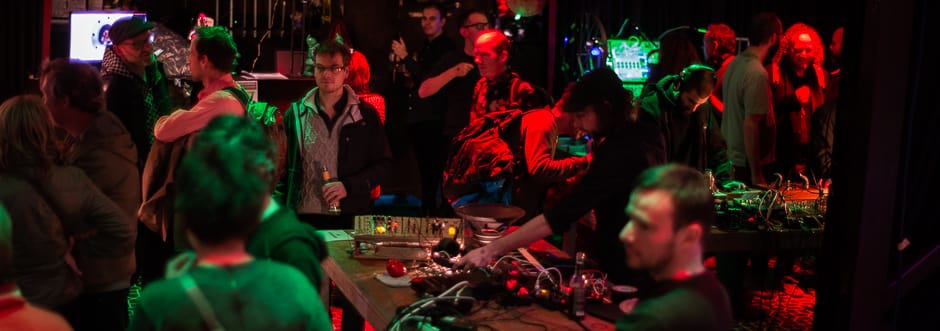
I represented RottingSounds at the festival/fair “instruments make play” that took place at WORM in Rotterdam, NL last weekend. I was welcomed with my “Buffer manipulation” setup in a very relaxed and informal atmosphere, in which many curious visitors stopped by to ask questions.
